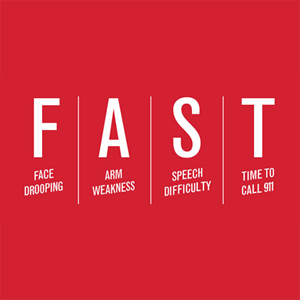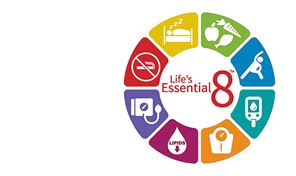Key Patient Messages Primary Prevention of Stroke Clinical Practice Guideline
Published: October 21, 2024
- It’s important to know that strokes can happen to anyone, even young people.
Certain groups are at higher risk for having a stroke including Black Americans and women. - Learning about stroke signs can save your life or someone you care about.
Use the letters F.A.S.T. to spot a stroke. - Nausea
- Trouble walking
- Trouble talking
- Severe headache
- Confusion
- Trouble seeing
- Numbness or weakness
- Strokes can be prevented. Learning about what puts you at risk for stroke can help you take steps to stop a stroke from happening.
- When tissue similar to the uterine lining grows outside the uterus. This is called endometriosis.
- When the ovaries stop working before age 40. This is called premature ovarian failure.
- When periods stop before age 45. This is called early menopause.
- Remember good health habits can help prevent a stroke and other health conditions. Life's Essential 8 shows what can increase or decrease your chance of having health problems like a stroke.
- How you eat
- Physical activity
- Tobacco use
- Sleep
- Managing your weight
- Controlling cholesterol
- Managing blood sugar
- Controlling high blood pressure
- Talking with your health care provider about your stroke risk can help you learn how to prevent a stroke from happening, but that can sometimes feel difficult to do. Here are some questions you could ask, depending on your personal health and family medical history.

Other symptoms to watch for are:
| COMMON RISK FACTORS | WHAT TO KNOW ABOUT THIS RISK FACTOR |
|---|---|
| Family History of Stroke | If someone in your family had a stroke, you could be at an increased risk of having a stroke, too. |
| High Blood Pressure | Controlling your high blood pressure is very important to prevent a stroke. This can sometimes be hard to do. Your health care provider may suggest different changes to your lifestyle. You may also need to take 2 or 3 drugs to help control your blood pressure, not just one drug. |
| Migraine Headaches | Experiencing migraines increases the risk of having a stroke. |
| Having other health conditions | High cholesterol, Atrial Fibrillation, cancers, infections, diabetes, autoimmune illnesses, sickle cell disease, and other health conditions can increase the risk of stroke. |
| Substance Use | Misuse of alcohol and drugs (including prescription drugs that are misused) can lead to an increased risk of stroke. |
| Tobacco Use | Tobacco use (including smoking and vaping) increases the risk for stroke. Quitting smoking or vaping often takes more than one try. Learn about the resources that can help you quit. |
| Other factors that are not medical | Education, income, healthcare access, where you live, and experiencing racism can all affect your health and could increase your risk of having a stroke. |
| Lifestyle factors | Physical inactivity and unhealthy diet can also increase your risk for stroke. |
| COMMON RISK FACTORS FOR WOMEN | WHAT TO KNOW ABOUT THIS RISK FACTOR |
|---|---|
| High Blood Pressure During and After Pregnancy | If you had high blood pressure, called pre-eclampsia, during your pregnancy or soon after the birth, you are at an increased risk of stroke. Even if your blood pressure went back to the normal range shortly after having your baby. |
| Having other health conditions that affect women | If you have any of the following conditions you are at increased risk of stroke. |
| Migraines and birth control | For some women, birth control without hormones is recommended compared to other birth control options with hormones. This is especially important for women who experience migraines. Talk with your health care provider about your risk of stroke and the safest birth control option for you. |

Take a free health quiz to see how you score.
Ask your health care provider
"Am I at an increased risk for having a stroke?"
"Does my blood pressure put me at risk for having a stroke?"
"My family member had a stroke. What can I do to lower my risk of having a stroke?"
For women, ask your health care provider
"I would like to take birth control. Which birth control method is safest for me to use and won’t increase my risk for stroke?"
"I had high blood pressure while pregnant and understand this can increase my risk for stroke. What can I do to prevent a stroke?"
"My health care provider told me I have endometriosis, and I understand this can increase my risk of having a stroke. What can I do to lower my risk of having a stroke?"
Citation
Bushnell C, Kernan WN, Sharrief AZ, Chaturvedi S, Cole JW, Cornwell WK 3rd, Cosby-Gaither C, Doyle S, Goldstein LB, Lennon O, Levine DA, Love M, Miller E, Nguyen-Huynh M, Rasmussen-Winkler J, Rexrode KM, Rosendale N, Sarma S, Shimbo D, Simpkins AN, Spatz ES, Sun LR, Tangpricha V, Turnage D; Velazquez G, Whelton P. 2024 Guideline for the primary prevention of stroke: a guideline from the American HeartAssociation/American Stroke Association. Stroke. Published online October 21, 2024. doi: 10.1161/STR.0000000000000475